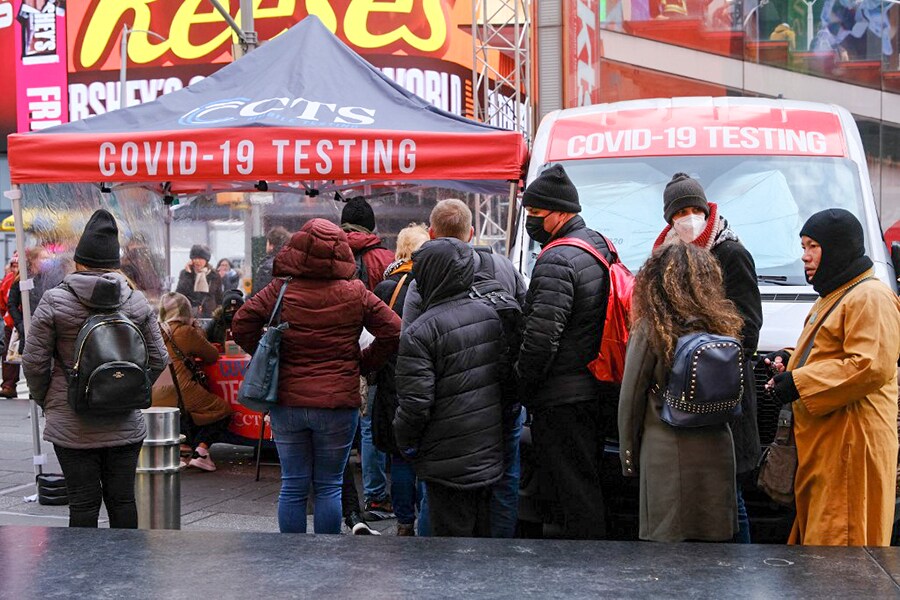
Across the world, Covid anxiety and depression take hold—again
Uncertainty bedevils plans. Panic spreads in an instant even if, as with the omicron variant, the extent of the threat is not yet known. Vaccines look like deliverance until they seem a little less than that
 People wait in line to get tested for COVID-19 at a testing facility in Times Square on December 09, 2021 in New York City. As the fast-spreading new Omicron variant of COVID-19 has been detected in at least 19 states, health officials are urging Americans to get vaccinated and receive their booster shots.
People wait in line to get tested for COVID-19 at a testing facility in Times Square on December 09, 2021 in New York City. As the fast-spreading new Omicron variant of COVID-19 has been detected in at least 19 states, health officials are urging Americans to get vaccinated and receive their booster shots.
Image: Spencer Platt/Getty Images/AFP
PARIS — A recent cartoon in the French daily Le Monde featured a bedraggled man arriving at a doctor’s office for a COVID-19 vaccine. “I am here for the fifth shot because of the third wave,” he says. “Or vice versa.”
His bewilderment as France suffers its fifth wave of the pandemic, with cases of the delta variant rising sharply along with omicron anxiety, captured a mood of exhaustion and simmering anger across the world two years after the deadly virus began to spread in China.
Uncertainty bedevils plans. Panic spreads in an instant even if, as with the omicron variant, the extent of the threat is not yet known. Vaccines look like deliverance until they seem a little less than that. National responses diverge with no discernible logic. Anxiety and depression spread. So do loneliness and screen fatigue. The feeling grows that the COVID era will go on for years, like plagues of old.
Even in China, with no reported COVID deaths since January, some confess weariness with the measures that have kept them safe when so many others perished.
©2019 New York Times News Service







